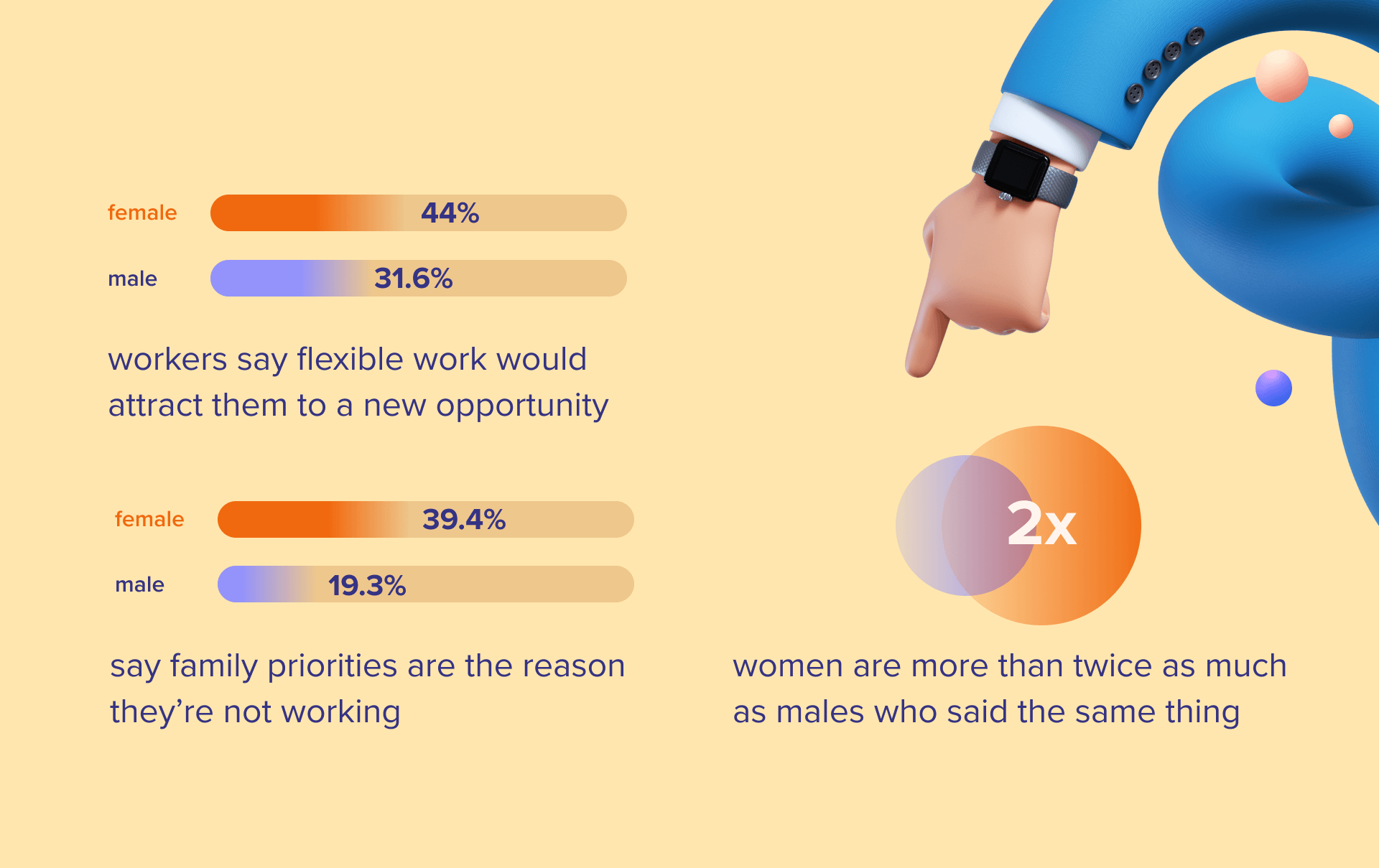Women will work for less now – but employers can fix this
How much money would it take for you to change jobs? That’s definitely something that every employed job seeker thinks about.

While money isn’t everything, there are definitely floors that each candidate won’t drop below. And post-pandemic, those numbers are shifting.
As of July 2022, the average wage for an American to switch jobs (the “reserve wage”) was $72,873. Averages skew toward the high end. All it takes is Bill Gates saying he’s willing to change jobs for $3.6 billion, and the average number goes up. Most Americans earn less than $72,873. A median figure would probably give a more accurate picture of what people look for.
But what’s more interesting is when you break it down by gender. The average reserve wage for men has gone up to $86,259 from the previous quarter, while the reserve wage for women dropped to $59,543.
That’s right. Men want more than they did in March, and women are willing to settle for less than they did in March.
What is happening here that women feel like they are worth less in July than they did in March?
The Fed does this survey three times a year, and the July numbers, released in August, are the latest. Maybe it was a blip. It doesn’t seem logical that with inflation soaring, women should be looking to settle for less. What’s going on here?
Settling for less to re-enter?
Caroline Fairchild, Editor in Chief of BFF, a website focused on cryptocurrency news for women and nonbinary people, has a theory that makes a lot of sense. She writes on LinkedIn:
Caroline writes: “My hunch is that the women who were out of the workforce during the pandemic are willing to accept less to get back in. Also, there is no understating the impact of no work or stressful work during the pandemic (women who stayed employed during COVID took on more responsibility) on the ability of women to negotiate for higher pay.”
She’s got a point. More women than men left the workforce in 2020, whether voluntarily or involuntarily. And they didn’t come back when businesses started to reopen and ramp up.
Eden King, Ph.D., a professor of psychology at Rice University, explains that this isn’t purely preference. Societal pressures meant that when childcare became near impossible to find, women felt pressured to stay home while their husbands and boyfriends worked.
“Instead of opting out,” King told the American Psychological Association, “women are being pushed out.”
Additionally, women in 37% of families have most or all childcare responsibilities. So when schools and daycare centers closed, women left the workplace to care for their children.
Workable’s Great Discontent survey report found similar results, with twice as many women as men to cite family priorities to be the reason they’re not working (39.4% vs. 19.3%). That’s just for the US – in the UK, females are more than six times as likely as males to cite family priorities as the reason why they’re not working (41.7% vs. 6.7%).
Hiring biases
Because more women left the workforce than men and, therefore, have more significant gaps on their resumes, it is harder for them to land new opportunities.
An Indeed study in 2021 found that 70% of people in “hiring positions … believed that an unemployed person would make a less productive employee.”
Yikes. No wonder women are willing to work for less. If they’ve been out of the workforce for two years and 70% of hiring managers openly admit that they favor the already employed, it’s no wonder women feel they have to accept less money.
Can businesses fix this?
Yes, they can. Here is what needs to happen.
Contents
1. Stop the bias against the unemployed
We talk about unconscious bias, but this is conscious bias – remember, 70% of hiring managers explicitly preferred employed people. Whether you lose your job or choose to stay home, you don’t lose your ability to gain new skills.
2. List accurate salaries in the job posting
If you want to stop women from working less than men, stop making people guess the market rate for the position. List an accurate range – with the top being what your actual top range is. (Plenty of people use the whole range but never hire above midpoint. Make the midpoint your top-listed salary if you won’t go above that.)
3. Offer more flexibility
Women want more flexibility than men do, while female-heavy careers tend to be the ones without flexibility. If you can offer flexibility, do. Even offering a hybrid schedule or the chance to choose what time to come in can make a huge difference in attracting female candidates.
4. Offer fixed schedules
While this may seem a direct contradiction to the above, retail, restaurant, and healthcare jobs often have unpredictable schedules. If you recall, women take care of the children more than men. Daycare is difficult enough to find with a set schedule and can be nearly impossible if you work opening shifts all this week and closing shifts all next week. For in-person shift jobs, let employees pick shifts and stick to them.
5. Promote from within
An MIT Sloan Management study found that women who reached executive levels had to quit jobs to move up. It’s not that they weren’t capable – they had to go elsewhere to get someone to recognize that. Make sure you evaluate your current male and female employees for leadership roles.
Will the pay gap between men and women ever be zero? Probably not, because men and women do have different preferences.
But, when women think they are worth less now than they were a few months ago, it’s likely not a preference issue – business decisions matter; yours included.





